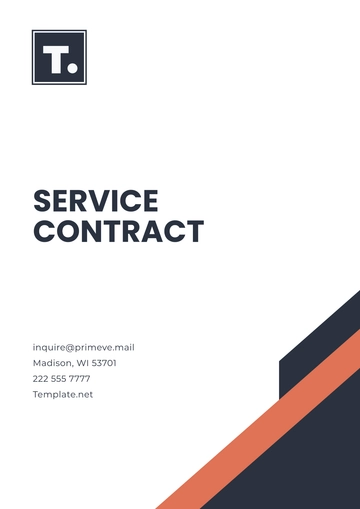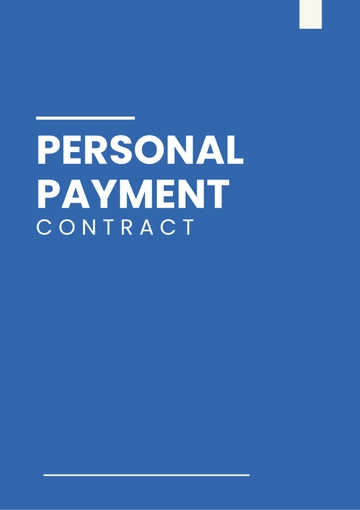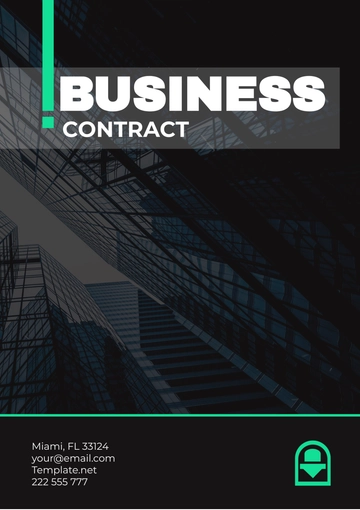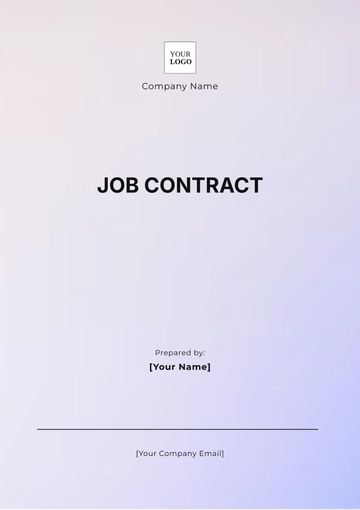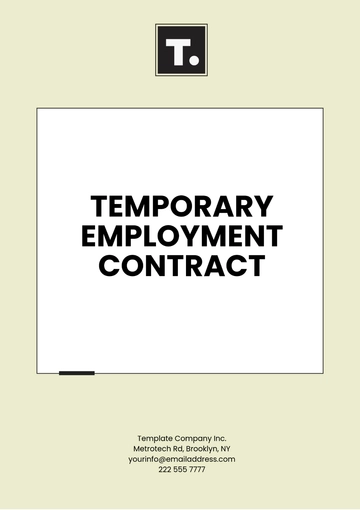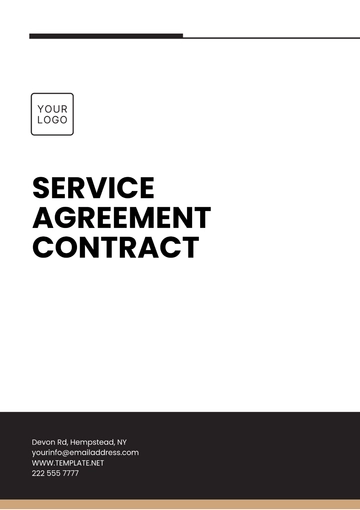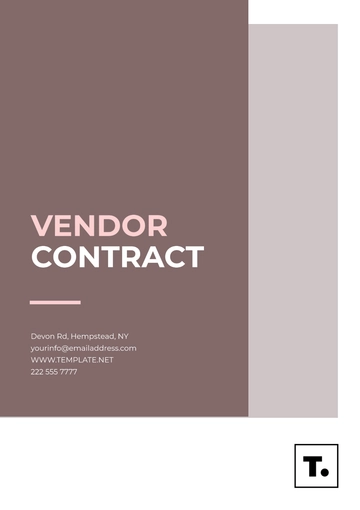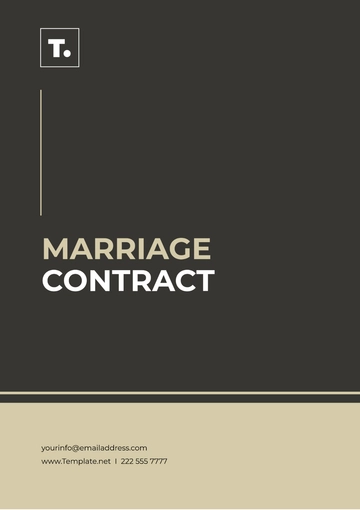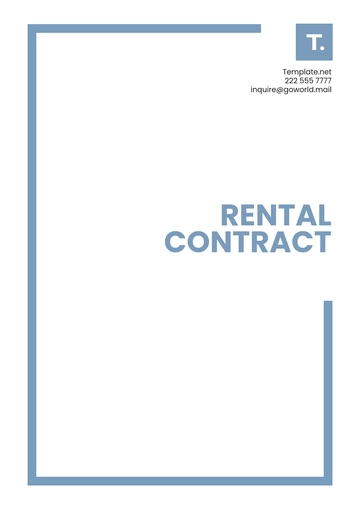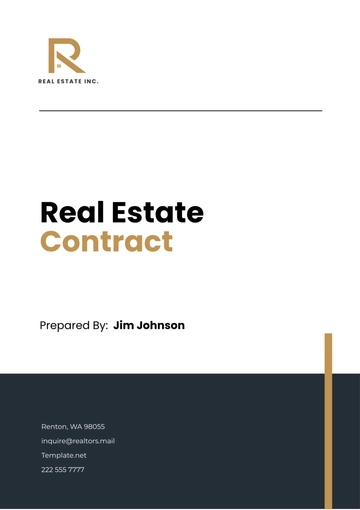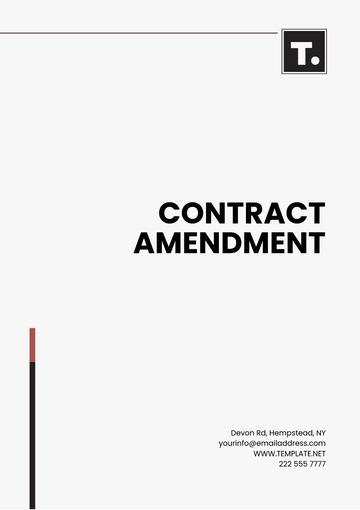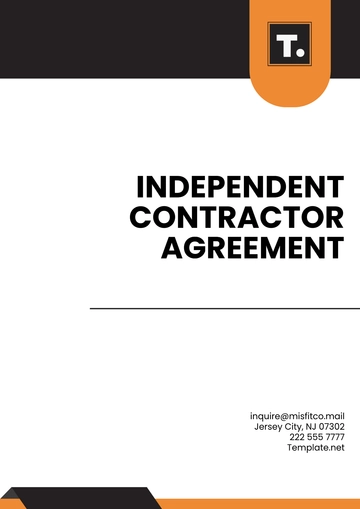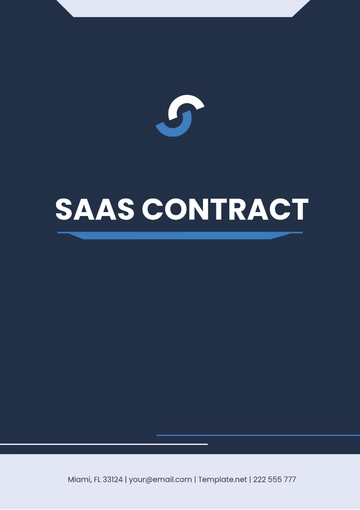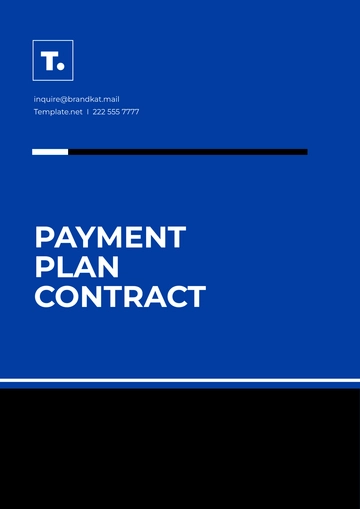Free Sales Policy & Procedure for Contractual Violations

Contractual Violations
I. Introduction
Purpose of the Policy & Procedure
This Sales Policy & Procedure for Contractual Violations document serves as a guiding framework for all sales professionals within [Your Company Name]. The purpose of this document is to establish a comprehensive set of guidelines for addressing contractual violations, ensuring ethical business practices, and protecting our organization's reputation and interests.
Scope of the Policy & Procedure
This policy and procedure applies to all employees and stakeholders involved in sales activities at [Your Company Name]. It covers contractual obligations, responsibilities, and procedures related to identifying, reporting, investigating, and addressing contractual violations.
II. Policy
Adherence to Contractual Commitments
At [Your Company Name], we are committed to upholding the terms and conditions of all contracts and agreements. We acknowledge that contractual violations not only damage our reputation but can also result in legal consequences. Therefore, we pledge to adhere to our contractual commitments diligently.
Responsibility for Contractual Obligations
Each member of our sales team bears the responsibility of ensuring that contractual obligations are met. It is the duty of all sales professionals to familiarize themselves with the terms of each contract they are responsible for and to act in accordance with those terms.
Transparency and Honesty
Transparency and honesty are fundamental principles of our sales operations. We shall provide accurate and complete information to our clients and other stakeholders while conducting our sales activities. Any ambiguities or uncertainties within a contract must be clarified and addressed in a transparent manner.
III. Procedure
Identifying Contractual Violations
Contractual violations can take various forms, such as failure to deliver on time, misrepresentation, or not meeting quality standards. Sales professionals should actively monitor their contracts to identify any potential violations.
Reporting Contractual Violations
Upon identifying any potential contractual violation, the sales professional should promptly report it to their immediate supervisor or manager. All reports of contractual violations must be submitted in writing and contain all relevant details.
Investigation of Violations
Once a report of a contractual violation is received, the sales manager will initiate an investigation. The investigation will include a review of the contract, interviews with relevant parties, and gathering any necessary evidence to determine the validity of the violation.
Remedial Actions
If a contractual violation is confirmed, appropriate remedial actions will be taken to rectify the situation. These actions may include addressing the specific violation, renegotiating terms if necessary, or taking corrective measures to meet the contractual obligations.
Escalation Procedures
In cases where contractual violations are severe, recurring, or cannot be satisfactorily resolved at the sales team level, the matter may be escalated to higher management or legal authorities, depending on the circumstances.
Documentation and Record-Keeping
All reports, investigation findings, and actions taken in response to contractual violations will be documented and recorded for reference. Maintaining comprehensive records is essential for transparency and accountability.
Continuous Improvement
As part of our commitment to ethical and effective sales practices, we will continuously analyze and evaluate instances of contractual violations to identify areas of improvement. This information will guide us in enhancing our procedures and training for better adherence to contractual commitments.
IV. Data Privacy and Confidentiality
Data Privacy: All data collected and used during the implementation of this policy and procedure will be handled in compliance with our organization's data protection and privacy policies.
Confidentiality: Information related to this policy and procedure, including reports of violations, will be treated as confidential within the organization. It is essential to maintain the confidentiality and integrity of the investigation process.
V. Escalation and Dispute Resolution
Handling Minor Violations
In the event of minor contractual violations, the following steps should be taken:
The violation should be reported to the immediate supervisor or manager.
The supervisor or manager will review the violation and assess its severity.
If deemed a minor violation, the supervisor or manager will work with the involved parties to resolve the issue and ensure that the violation does not recur.
A record of the violation and its resolution should be documented for reference.
Escalating Serious Violations
When a contractual violation is deemed serious and cannot be resolved at the managerial level, the following escalation process should be followed:
The violation should be reported to the relevant department head or executive.
The department head or executive will conduct a thorough review of the violation.
If necessary, legal counsel may be involved to assess the implications and potential legal actions.
Decisions regarding the resolution of serious violations should be communicated to all parties involved.
A record of the violation and the steps taken for resolution should be documented for reference.
Dispute Resolution Process
In the event that contractual disputes cannot be resolved through the internal escalation process, a formal dispute resolution process may be initiated. This process typically involves:
Engaging in a structured negotiation and mediation process.
Seeking third-party arbitration or mediation services if required.
Adhering to any alternative dispute resolution mechanisms agreed upon in the contract.
Documenting the dispute resolution process and its outcome for future reference.
VI. Enforcement and Penalties
Penalties for Violations
Penalties for contractual violations may vary based on the nature and severity of the violation. Common penalties include:
Penalties for Violations | Description |
|---|---|
Fines or financial penalties | Monetary consequences imposed for breaching contractual terms, often proportional to the severity of the violation. |
Suspension of contract privileges | Temporary halt or restriction on certain contract privileges as a repercussion for non-compliance or breach, allowing time for resolution or correction. |
Termination of the contract | Formal cessation of the contract agreement due to severe or repeated violations, ending all obligations and rights under the contract. |
Legal action in cases of significant breaches | Pursuing legal recourse through litigation or other legal means in response to substantial breaches that result in significant harm or damages. |
Restitution or compensation to affected parties | Providing compensation or making restitution to parties harmed by the breach, aiming to restore them to the position they would have been in had the breach not occurred. |
Enforcement Process
The enforcement process will be carried out systematically to ensure fairness and consistency. It typically involves:
Issuing a notice of violation and the associated penalties.
Allowing the responsible party an opportunity to respond or rectify the violation.
Implementing penalties if the violation is not addressed within a specified timeframe.
Legal Actions
In cases of severe contractual violations or disputes that cannot be resolved through internal processes, legal actions may be considered. Legal actions can include filing lawsuits, seeking injunctions, or pursuing other legal remedies available under applicable laws.
VII. Documentation and Record-Keeping
Record-Keeping Requirements
Proper record-keeping is essential to document contractual violations and their resolution. Records should include:
Details of the violation, including date, parties involved, and nature of the violation.
Correspondence and communication related to the violation.
Actions taken to address the violation and their outcomes.
Documentation of Violations
Each contractual violation should be documented thoroughly. This documentation serves as evidence in case of disputes or legal actions.
Archiving of Records
Maintain an organized archive of all records related to contractual violations for a specified duration, as required by relevant laws and regulations. Archived records should be easily accessible for reference and compliance purposes.
VIII. Training and Education
Employee Training
All employees should receive training on the organization's contract policies and procedures. Training should cover:
Understanding contractual obligations.
Identifying potential violations.
Reporting and escalation processes.
Ethical conduct and compliance.
Customer Training (if applicable)
If customers are involved in contract-related activities, it may be necessary to provide them with training and guidance to ensure their understanding of contract terms and obligations.
Ongoing Education
Regular training and educational programs should be conducted to keep employees and relevant stakeholders updated on changes in policies, laws, and regulations affecting contracts and contractual obligations.
IX. Compliance Monitoring and Auditing
Regular Compliance Audits
Regular compliance audits are an essential part of ensuring adherence to contract policies and procedures. These audits serve as a proactive measure to identify and rectify violations.
Audits can be performed by both internal and external auditors who have expertise in contract management.
Audit Reporting
Audit reports are a critical component of the compliance auditing process. These reports provide detailed insights into the findings, violations, and areas where improvement is needed. They typically include:
A summary of the audit process and objectives.
A breakdown of findings, categorized by the nature and severity of violations.
Recommendations for corrective actions to address violations.
Suggestions for areas where compliance and contract management processes can be strengthened.
The audit reports should be shared with relevant stakeholders within the organization, including management, legal teams, and contract administrators. Sharing these reports is a key step in initiating corrective actions to rectify and prevent future breaches.
Corrective Action Plans
Corrective action plans are the response to audit findings. These plans are crucial for rectifying violations, improving overall compliance, and preventing future breaches. The development and implementation of corrective action plans typically involve the following steps:
Identifying the responsible parties for each corrective action.
Defining the specific actions required to address violations and compliance gaps.
Establishing clear timelines for the completion of corrective actions.
Allocating necessary resources and responsibilities.
Regularly monitoring and reviewing the progress of corrective actions.
The aim of corrective action plans is to ensure that contract management practices are in line with ethical standards and that contractual violations are appropriately resolved.
X. Communication and Reporting
Reporting Violations
All employees and stakeholders within the organization should be aware of the procedures for reporting contractual violations. Reporting violations promptly is essential to maintaining the integrity of the contract management process. The reporting process should include the following elements:
Clear guidance on how and where to report violations.
A confidential reporting mechanism that allows employees and stakeholders to report violations without fear of retaliation.
A point of contact or department responsible for receiving and handling violation reports.
Communication of Violations
In cases where contractual violations are reported, effective communication is essential. Timely and transparent communication ensures that all parties involved are informed of the violation, its current status, and any actions taken or planned to address it. This may include:
Notifying relevant departments, such as legal or compliance teams.
Sharing information with the affected parties, such as the customer or vendor involved in the contract.
Keeping employees and stakeholders informed throughout the resolution process.
Reporting Channels
Clear reporting channels and mechanisms should be established to facilitate the confidential reporting of contractual violations. These channels may include:
A designated reporting hotline or email address.
An online portal or system for submitting reports.
Direct contact with supervisors or compliance officers.
Confidentiality and protection from retaliation should be assured to encourage the reporting of violations.
XI. Review and Revision of Policy
Periodic Policy Review
The organization should commit to periodic reviews of this policy to ensure that it remains relevant and effective. The purpose of these reviews is to:
Assess the policy's alignment with evolving legal and regulatory requirements.
Evaluate the policy's effectiveness in preventing and addressing contractual violations.
Incorporate lessons learned from past contractual violations into the policy.
Regular reviews ensure that the policy is a living document that adapts to changing circumstances and emerging best practices.
Policy Revisions
Revisions to the policy should be driven by legal and regulatory changes, emerging best practices in contract management, and the organization's own experiences in handling contractual violations. The process of revising the policy should involve:
A thorough assessment of the changes in laws, regulations, and industry standards affecting contract management.
An analysis of past violations and the lessons learned from them.
Input from relevant stakeholders within the organization, including legal teams and compliance officers.
A formal approval process to ensure that policy changes are consistent with the organization's values and objectives.
Approval Process for Changes
An established approval process should be followed for all policy changes. This process may involve multiple levels of review and approval to ensure that policy revisions are well-considered, consistent with the organization's values, and in compliance with all applicable laws and regulations.
- 100% Customizable, free editor
- Access 1 Million+ Templates, photo’s & graphics
- Download or share as a template
- Click and replace photos, graphics, text, backgrounds
- Resize, crop, AI write & more
- Access advanced editor
Easily manage contractual violations with Template.net's Sales Policy & Procedure template. Editable and customizable, it's tailored to your needs. Effortlessly tweak content using our AI Editor Tool. Streamline processes and ensure compliance, safeguarding your business interests. Take charge of sales policies with this comprehensive, user-friendly solution.
You may also like
- Rental Contract
- Contractor Contract
- Contract Agreement
- One Page Contract
- School Contract
- Social Media Contract
- Service Contract
- Business Contract
- Restaurant Contract
- Marketing Contract
- Real Estate Contract
- IT Contract
- Cleaning Contract
- Property Contract
- Supplier Contract
- Partnership Contract
- Food Business Contract
- Construction Contract
- Employment Contract
- Investment Contract
- Project Contract
- Payment Contract
- Student Contract
- Travel Agency Contract
- Startup Contract
- Annual Maintenance Contract
- Employee Contract
- Gym Contract
- Event Planning Contract
- Personal Contract
- Nursing Home Contract
- Law Firm Contract
- Work from Home Contract
- Software Development Contract
- Maintenance Contract
- Music Contract
- Amendment Contract
- Band Contract
- DJ Contract
- University Contract
- Salon Contract
- Renovation Contract
- Photography Contract
- Lawn Care Contract


